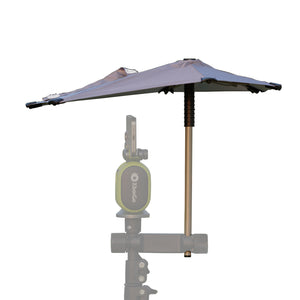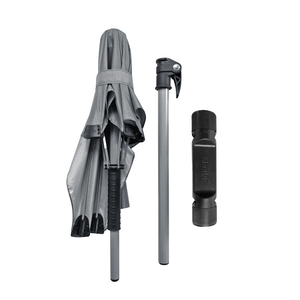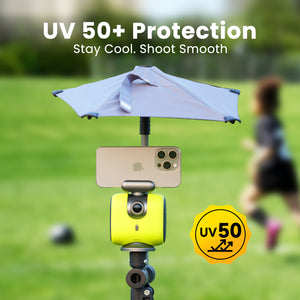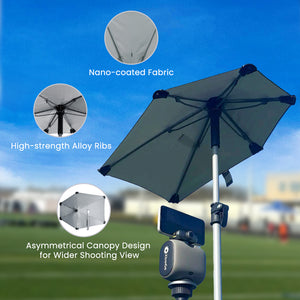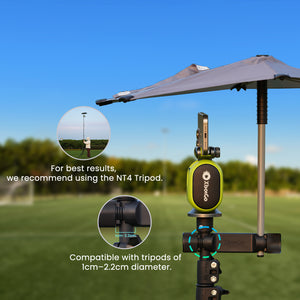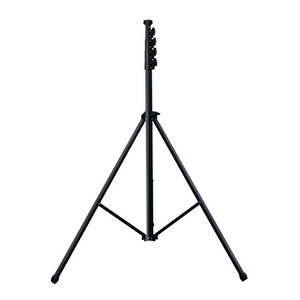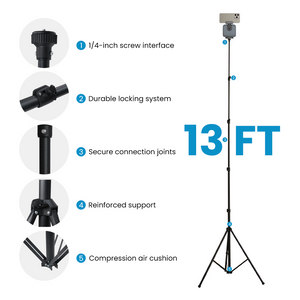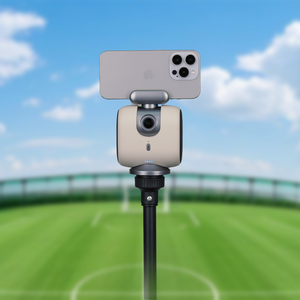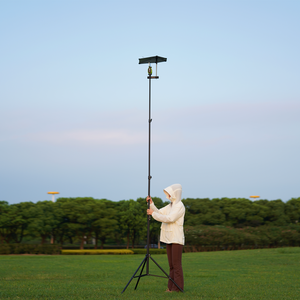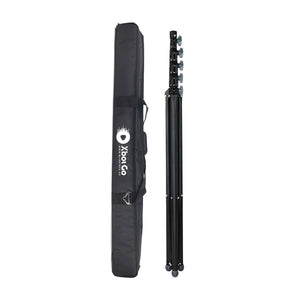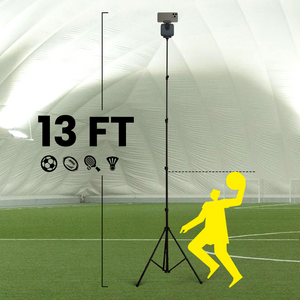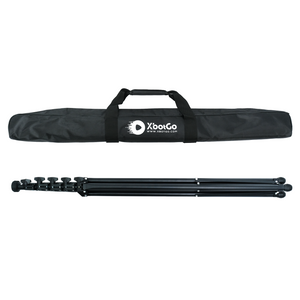XbotGo Chameleon AI Sports Camera
La guía completa para entender las penalizaciones en hockey
Tu hijo recibe su primera penalización o estás viendo un partido de hockey confundido por las decisiones del árbitro. Las penalizaciones en el hockey combinan reglas claras con el criterio arbitral, creando un sistema que incluso los aficionados más experimentados debaten.
Esta guía desglosa las penalizaciones en partes comprensibles. Aprenderás no solo lo que dicen las reglas, sino también por qué los árbitros toman decisiones controvertidas y cómo funcionan las penalizaciones en la práctica. Dado que aproximadamente el 20 % de las jugadas de poder terminan en gol, comprender las penalizaciones es fundamental para entender una parte crucial de la estrategia del hockey.
Comprensión de las clasificaciones de sanciones
Por qué esto importa
Las penalizaciones en hockey no son decisiones arbitrarias arbitrarias arbitrarias. Siguen un sistema estructurado diseñado para garantizar el juego limpio y la seguridad de los jugadores. Sin embargo, muchas penalizaciones se encuentran en lo que jugadores y aficionados denominan "zonas grises", donde la interpretación arbitral juega un papel fundamental.
Comprender estas clasificaciones te ayuda a predecir jugadas, apreciar las decisiones arbitrales y explicar el juego a los demás. Y lo que es más importante, revela por qué dos jugadas aparentemente similares pueden resultar en penalizaciones diferentes, o incluso en ninguna.
Sanciones menores: La Fundación
Las penalizaciones menores constituyen la base del sistema disciplinario del hockey. Estas infracciones de dos minutos envían al jugador infractor al banquillo de castigos mientras su equipo juega con un hombre menos. ¿La clave? Si el equipo contrario anota durante la superioridad numérica, la penalización finaliza antes y el jugador regresa al hielo.
Entre las sanciones menores más comunes se incluyen:
Una zancadilla se produce cuando un jugador usa su palo, brazo o pierna para hacer caer a un oponente. Imagina a un jugador patinando a toda velocidad hacia la portería cuando el palo de un oponente engancha sus patines. El jugador cae, suena el silbato y comienzan los dos minutos.
El enganche se produce cuando un jugador usa la hoja de su palo para frenar o impedir el paso a un oponente. Es como usar el palo como un cayado para agarrar a alguien por la cintura o los brazos. Las reglas modernas de la NHL han endurecido considerablemente las sanciones por enganche, eliminando el estilo de agarre que ralentizaba los partidos en la década de 1990.
Sujetar es exactamente lo que parece: agarrar el cuerpo, el palo o la camiseta del oponente para impedirle moverse. Si no puedes seguir el ritmo de un jugador más rápido, agarrarle la camiseta puede ralentizarlo, pero te costará dos minutos.
El juego peligroso con el palo consiste en hacer contacto con el oponente por encima de los hombros usando el palo. Esta penalización tiene una particularidad: si el golpe con el palo provoca sangrado, se convierte automáticamente en una doble penalización menor de cuatro minutos. Los árbitros suelen comprobar si hay sangre después de incidentes de juego peligroso con el palo, aunque la "regla del sangrado" no está escrita oficialmente; es más bien una práctica habitual.
Un golpe con el palo consiste en blandir el stick contra un oponente, ya sea golpeando su cuerpo o su stick. La clave está en el movimiento. Un jugador defensivo podría golpear el stick de un oponente para soltar el disco, pero si el árbitro lo considera excesivo, la penalización es de dos minutos.
La interferencia impide que un jugador sin el disco participe en la jugada. El hockey permite el contacto físico significativo, pero solo contra el portador del disco. Golpear a alguien lejos de la jugada o impedirle perseguir el disco conlleva esta penalización.
El crosschecking utiliza el palo sujeto con ambas manos para bloquear al oponente. El palo se convierte en una barra que se empuja contra el oponente en lugar de usar el cuerpo para el bloqueo. Es particularmente peligroso cerca de las tablas, donde los jugadores no pueden protegerse.
Las faltas leves pueden parecer sencillas, pero el contexto importa. Un golpe leve con el palo podría pasar desapercibido al principio del partido, pero provocar una falta en la prórroga. Esto no es parcialidad arbitral, sino filosofía de gestión del partido en acción.
Sanciones graves: Cuando la cosa se pone seria
Las penalizaciones mayores duran cinco minutos, independientemente del número de goles que marque el equipo contrario. Estas infracciones suelen implicar fuerza excesiva, intención de lesionar o jugadas especialmente peligrosas.
Las peleas representan la penalización más singular del hockey. ¿Quitarse los guantes y lanzar puñetazos? Cinco minutos para cada contendiente. A diferencia de otros deportes que expulsan inmediatamente a los peleadores, el hockey considera las peleas como parte de su tradición de autorregulación. Ambos jugadores se sientan durante cinco minutos, pero sus equipos pueden realizar sustituciones para mantener el partido con la misma cantidad de jugadores.
El boarding empuja a un oponente peligrosamente contra la tabla. Los factores clave son la distancia de la víctima a la tabla y su capacidad para protegerse. Un jugador que golpea a otro por la espalda cerca de la tabla suele cometer una falta mayor por boarding porque la víctima no puede prepararse para el impacto.
Cargar implica dar zancadas excesivas antes de golpear a un oponente o impulsarse con los pies para realizar un golpe. A pesar de los debates en internet sobre "dos zancadas" versus "tres zancadas", el reglamento no especifica un número. Indica "en función de la distancia recorrida", lo que deja la interpretación a criterio de los árbitros. Generalmente, patinar desde el otro extremo de la pista para embestir a alguien conlleva una penalización por carga.
El spearing utiliza la hoja del palo como una lanza para golpear al oponente. Es una de las jugadas más peligrosas del hockey y casi siempre resulta en una sanción disciplinaria adicional más allá de la penalización mayor de cinco minutos.
Un golpe por la espalda impacta a un jugador que no puede ver venir al atacante ni protegerse. Estos golpes suelen ocurrir cerca de las tablas y conllevan el riesgo de lesiones graves en la cabeza y el cuello. La NHL los considera una infracción tan grave que a menudo resultan en la expulsión automática del jugador.
Las penalizaciones graves cambian el rumbo de los partidos. Cinco minutos de superioridad numérica —incluso sin la posibilidad de que termine antes de tiempo— brindan a los equipos múltiples oportunidades de gol. Los equipos que defienden en inferioridad numérica suelen utilizar a sus mejores jugadores defensivos en turnos rotativos, creando una especie de partida de ajedrez dentro del juego.
Mala conducta y expulsiones: Más allá del juego
Las penalizaciones por mala conducta duran 10 minutos, pero funcionan de forma distinta a las faltas menores o mayores. El jugador penalizado permanece en el banquillo de castigos durante 10 minutos, pero su equipo puede sustituirlo inmediatamente. El equipo no juega con un jugador menos, por lo que este periodo sirve más bien como una especie de "tiempo de reflexión" para el jugador.
Entre las razones más comunes se incluyen:
- Abuso verbal contra los funcionarios
- Las trifulcas continúan tras la intervención de los árbitros.
- Lanzar el equipo por frustración
- Abandonar el estrado para discutir llama
La mayoría de las faltas de conducta conllevan otra penalización. Un jugador podría recibir dos minutos por juego brusco más diez por mala conducta si no deja de protestar al árbitro. El jugador cumple ambas penalizaciones simultáneamente, pero no puede regresar hasta la primera interrupción del juego después de que expire su tiempo.
Las faltas graves conllevan la expulsión definitiva del jugador. Se dirige al vestuario y no puede regresar. La penalización cuenta como 10 minutos en las estadísticas (20 en partidos internacionales), pero el jugador queda fuera del partido. La acumulación de faltas graves conlleva suspensiones automáticas, un mecanismo de control que garantiza que las expulsiones no se conviertan en algo habitual.
Las penalizaciones de partido representan el castigo más severo en el hockey. Reservadas para los intentos deliberados de lesionar, resultan en la expulsión inmediata y la entrada de un sustituto que cumple una sanción de cinco minutos. La liga revisa todas las penalizaciones de partido para determinar posibles suspensiones y multas. Un jugador que golpea a otro en la cabeza con su palo, por ejemplo, probablemente recibiría una penalización de partido.
Las sanciones más incomprendidas
Carga: ¿Cuántos pasos son demasiados?
Las cargas generan más polémica que casi cualquier otra penalización. Los aficionados cuentan los pasos. Los jugadores discuten sobre la distancia. Los árbitros consideran todo el contexto.
El reglamento de la NHL define la carga como "golpear violentamente a un oponente de cualquier manera" después de haber patinado "una distancia considerable". No existe un número mágico, a pesar de lo que sugieren los debates en los bares. Tres zancadas se convirtieron en una creencia popular, pero no está en las reglas.
Lo que los árbitros evalúan realmente:
- Distancia recorrida : Patinar desde el centro de la pista para chocar con alguien probablemente resultará en una sanción.
- Velocidad de impacto : Acelerar hacia el impacto en lugar de planear
- Dejar los pies : Saltar o impulsarse hacia arriba convierte los golpes en cargas.
- Posición vulnerable : Golpear a alguien que no puede defenderse.
La confusión surge de la inconsistencia. Un árbitro podría sancionar carga en un golpe que otro acepta. Esto no es incompetencia, sino la dificultad de discernir qué es "violento" y "a gran distancia" a la velocidad del juego.
Los jugadores aprenden las tendencias de cada árbitro. Algunos sancionan las cargas con severidad, penalizando cualquier golpe con un impulso significativo. Otros permiten mayor contacto físico, sancionando solo las infracciones evidentes. Los jugadores inteligentes adaptan su estilo de golpeo según quién arbitre.
Golpear con el palo frente a contacto con el stick: ¿Dónde está el límite?
En el hockey, cada jugada implica el choque de palos. Entonces, ¿cuándo deja de ser juego limpio el contacto físico con el palo?
La clave está en el swing. El slash requiere un movimiento de balanceo, como cortar leña. Un jugador defensivo que levanta el palo del oponente verticalmente no está haciendo un slash. Lo que sí lo está es balancearlo hacia abajo.
La aplicación de las normas contra el slashing ha cambiado drásticamente. La normativa de la NHL de 2017 endureció las reglas, convirtiendo cualquier contacto del stick con las manos en una penalización automática. Los jugadores se adaptaron apuntando a la parte inferior del stick del oponente, pero incluso estos golpes con el stick pueden ser sancionados si se consideran excesivos.
El contexto determina la aplicación de la ley:
- Ubicación : Las heridas en manos o muñecas se sancionan con severidad.
- Fuerza : Un toque puede deslizarse, un golpe no.
- Situación de juego : Las entradas desesperadas para evitar ocasiones de gol suelen provocar pitidos.
- Reacción del jugador : Las reacciones dramáticas influyen en las decisiones dudosas.
La pregunta de «dónde está el límite» no tiene una respuesta perfecta porque ese límite cambia. Al principio de la temporada, suele haber una aplicación estricta de las reglas, ya que las ligas enfatizan nuevos estándares. En los playoffs, la interpretación suele ser más flexible, ya que los árbitros «dejan que jueguen». Comprender este estándar fluido ayuda a explicar las aparentes inconsistencias.
La experiencia del banquillo de castigo
El área de penalización representa el rincón de descanso del hockey, pero dista mucho de ser un lugar de reflexión tranquila. Los jugadores experimentan una amplia gama de emociones e interacciones durante su período de enfriamiento obligatorio.
Algunos jugadores se enfurecen, sobre todo tras decisiones arbitrales dudosas. Discuten con los encargados del banquillo de castigos, hacen gestos a los árbitros o golpean sus palos con frustración. El encargado —un oficial fuera del hielo en la NHL— mantiene el orden, controla los tiempos de penalización y gestiona la puerta.
Otros jugadores reconocen su culpa con sonrisas tímidas. Un "Sí, lo sujeté" se convierte en un momento de sinceridad que los aleja de la intensidad competitiva. Estos jugadores suelen charlar con los oponentes que cumplen penalizaciones simultáneamente, a veces incluso riéndose juntos de sus infracciones.
Las conversaciones varían según el tipo de penalización:
- Mayores en combate : A menudo, asentimientos respetuosos entre combatientes.
- Penalizaciones por frustración : Murmullos airados sobre los árbitros
- Penalizaciones estratégicas : Los entrenadores podrían acercarse patinando para discutir tácticas.
- Sanciones por represalia : Reacción airada y silenciosa ante la infracción original injustificada.
La puerta del área de penalización se abre manualmente, no electrónicamente. El encargado controla el reloj y la abre justo cuando se acaba el tiempo. Los jugadores deben permanecer en el área aunque la puerta se abra antes de tiempo; salir antes de tiempo conlleva otra penalización.
Las aficiones locales suelen increpar a los jugadores visitantes dentro del área, sobre todo en los playoffs. Los jugadores pueden interactuar con los aficionados afines o ignorar a los hostiles. Algunos provocadores, conocidos por su comportamiento provocador, convierten el tiempo en el área en un espectáculo, interactuando con el público o provocando a los rivales.
Por qué los árbitros toman las decisiones que toman
Filosofía de gestión de juegos
Los árbitros de la NHL no solo hacen cumplir las reglas, sino que también gestionan los partidos. Esta filosofía crea la aparente inconsistencia que frustra a los aficionados, aunque en realidad cumple propósitos importantes.
La gestión del juego implica considerar:
- Marcador y tiempo : Una penalización mínima en un partido con marcador de 5-1 podría no ser señalada en una prórroga con empate a 1-1.
- Jugadas anteriores : Los árbitros llevan la cuenta de las penalizaciones, aunque niegan haberlas igualado.
- Temperatura del juego : Dejar pasar pequeñas infracciones podría prevenir problemas mayores.
- Seguridad del jugador : Las jugadas peligrosas se sancionan independientemente de la situación del juego.
Los playoffs intensifican la gestión del juego. "Déjenlos jugar" se convierte en el lema, y los árbitros elevan el umbral de penalizaciones. Las penalizaciones por sujetar durante la temporada regular se ignoran en los playoffs. Esto no está escrito en ninguna parte; es un acuerdo tácito en el hockey: los playoffs requieren un estándar diferente.
Los críticos argumentan que la gestión del juego socava la coherencia de las reglas. Los defensores replican que una aplicación estricta haría que fueran los árbitros, y no los jugadores, quienes determinaran los resultados. El debate continúa porque ambas posturas tienen razón.
Los árbitros también tienen en cuenta el ritmo y la fluidez del juego. Señalar cada infracción técnica crearía un partido entrecortado y lleno de silbatos que nadie querría ver. El reto consiste en encontrar el equilibrio entre seguridad, justicia y espectáculo.
Entre bastidores, la NHL revisa cada decisión arbitral. Los supervisores arbitrales evalúan el desempeño de los árbitros, lo que influye en sus asignaciones para los playoffs y en su desarrollo profesional. Este sistema de rendición de cuentas, invisible para los aficionados, genera una mayor consistencia de la que muchos creen.
Decisiones discrecionales frente a penalizaciones automáticas
Las penalizaciones en hockey se dividen en dos categorías que explican gran parte de la controversia en torno al arbitraje.
Las sanciones automáticas no dejan lugar a interpretaciones:
- Retraso de juego : ¿Disparas el disco por encima del cristal desde tu zona defensiva? Dos minutos, sin excepciones.
- Demasiados hombres : Seis patinadores en el hielo significa una penalización, punto.
- Infracciones del equipamiento del portero : El equipamiento ilegal conlleva penalizaciones automáticas
- Disco sobre cristal : Sin evaluación de la intención, solo un hecho geométrico.
Estas penalizaciones frustran a los jugadores porque el contexto no importa. Lanzar el disco accidentalmente por encima del cristal al despejarlo conlleva la misma penalización que lanzarlo intencionadamente para detener el juego. Pero esta coherencia tiene su valor: todos saben exactamente qué provoca estas decisiones.
Las sanciones arbitrales requieren interpretación por parte del árbitro:
- Sujeción : ¿Cuánto agarre es demasiado?
- Interferencia : ¿Cuándo la posición del cuerpo se convierte en obstrucción?
- Juego brusco : ¿Dónde está el límite entre lo competitivo y lo excesivo?
- Corte : ¿Qué contacto del palo cruza el umbral?
Estas penalizaciones generan controversia porque dos árbitros pueden interpretar la misma jugada de manera diferente. Un árbitro veterano podría permitir un juego más físico que un colegiado más joven con mayor autoridad. Ninguno se equivoca; simplemente interpretan las directrices, no se basan en estándares absolutos.
Esta combinación cumple funciones importantes. Las penalizaciones automáticas garantizan que ciertas acciones peligrosas o que interrumpen el juego siempre sean sancionadas. Las penalizaciones discrecionales permiten a los árbitros adaptarse al desarrollo del juego y al comportamiento de los jugadores. Una aplicación estricta de las normas permitiría el juego peligroso o generaría partidos muy disputados y con muchas faltas.
Jugadores y entrenadores estudian las tendencias arbitrales como si fueran informes de ojeadores. Saben qué árbitros son estrictos y cuáles dejan jugar con más libertad. No se trata de favoritismo, sino de profesionales que se adaptan a la realidad de su entorno laboral.
Análisis de penalizaciones y análisis de estadísticas modernas en hockey
Comprender el impacto de las sanciones
Las penalizaciones influyen en el desarrollo de los partidos mediante una simple estadística: en la NHL, las jugadas de poder se convierten en éxito aproximadamente el 20% de las veces. Esta realidad estadística condiciona las decisiones estratégicas en todo el hockey.
Los equipos abordan las penalizaciones desde múltiples perspectivas:
- Diferencial de penaltis : Equipos que registran los penaltis que han lanzado frente a los que han recibido.
- Porcentaje de efectividad en inferioridad numérica : Tasa de éxito cuando se juega con un jugador menos (el promedio de la NHL ronda el 80%).
- Eficacia en el juego de poder : Porcentaje de goles con superioridad numérica.
- Impacto del tiempo : Penalizaciones del primer período versus infracciones del tercer período
Los equipos inteligentes saben que no todas las penalizaciones tienen la misma importancia. Una falta por zancadilla en el primer periodo podría motivar a un equipo aletargado durante la inferioridad numérica. La misma penalización, protegiendo una ventaja de un gol a falta de dos minutos, podría sentenciar el partido.
La revolución analítica reveló datos sorprendentes. Algunos equipos agresivos se benefician al recibir ciertas penalizaciones, ya que su estilo provoca aún más infracciones en los rivales. La diferencia neta de penalizaciones es más importante que los minutos de penalización en sí.
Los entrenadores ahora enseñan "sanciones inteligentes" junto con la disciplina:
- Evitar escapadas : Un penalti por enganche evita una clara oportunidad de gol.
- Detener el impulso : Las infracciones estratégicas pueden interrumpir el ritmo del oponente.
- Protegiendo a las estrellas : Los defensores siguen recibiendo penalizaciones al defender a compañeros de equipo habilidosos.
- Penalizaciones por cambio de línea : Infracciones intencionales que permiten a los jugadores cansados cambiar de línea.
Esta capa estratégica añade complejidad más allá del simple cumplimiento de las normas. Las sanciones se convierten en herramientas tácticas, no solo en castigos por infracciones.
Guía práctica para diferentes públicos
Para padres: Conceptos básicos sobre sanciones
Tu hijo acaba de empezar a jugar al hockey y de repente oyes términos como "cross-checking" y "boarding". Esto es lo que realmente necesitas saber.
La mayoría de las penalizaciones para menores son obvias . Si a tu hijo de ocho años le pitan una zancadilla, probablemente haya derribado a alguien con su palo, ya sea accidentalmente (o no tan accidentalmente). No le des más vueltas.
Penalizaciones comunes en el hockey juvenil :
- Zancadilla : Un golpe con el palo o el cuerpo derriba los pies de otro jugador.
- Ataque cortante : Golpear al oponente con el palo (generalmente por frustración).
- Agresiones sexuales : Empujones o puñetazos después del silbato
- Golpe con el palo alto : El palo golpea a alguien en la cara (generalmente accidental en categorías juveniles).
Los árbitros juveniles priorizan la seguridad sobre la aplicación estricta de las reglas. Suelen advertir a los jugadores antes de sancionar penalizaciones, especialmente en las categorías inferiores. Consejos como "¡Cuidado con el palo!" o "¡Suave con las manos!" les dan a los niños la oportunidad de adaptarse.
Qué decirle a su hijo sancionado :
- Los accidentes ocurren; incluso los profesionales reciben sanciones.
- Aprende de ello y sigue adelante.
- Apoya a tus compañeros durante la inferioridad numérica.
- Agradece al árbitro después del partido, independientemente de todo.
Discutir con los árbitros desde la grada nunca sirve de nada. Los árbitros juveniles suelen ser adolescentes aprendiendo el oficio. Cometerán errores. Tu reacción le enseña a tu hijo más que cualquier explicación sobre un penalti.
Lo más importante es que las sanciones no son defectos de carácter. Los niños competitivos, al esforzarse al máximo, a veces se pasan de la raya. El castigo enseña las consecuencias mejor que cualquier sermón. Hay que centrarse en el esfuerzo y la deportividad, no en la disciplina perfecta.
Para los jugadores: Aprender de las penalizaciones
Provocar penaltis es algo habitual. Utilizarlos para mejorar es lo que distingue a los buenos jugadores de los grandes.
Analiza tus patrones de penalización :
- ¿Aumentas tus penalizaciones cuando estás cansado?
- ¿La mayoría de las penalizaciones se deben a la pereza (enganches, sujeciones) o a la agresividad (juego brusco, golpes)?
- ¿Hay oponentes que te provoquen más penaltis?
- ¿En qué momentos de los partidos se producen tus penalizaciones?
Las penalizaciones por negligencia perjudican más a los equipos. Enganchar por haber sido superado o sujetar por estar fuera de posición evidencia problemas de condición física o posicionamiento. Estas penalizaciones indican que se necesitan mejorar las habilidades, no solo problemas de disciplina.
Las penalizaciones agresivas pueden beneficiar a tu equipo si se aplican en el momento oportuno. Un placaje contundente que impone presencia física es distinto de un golpe de represalia indisciplinado. Aprende a diferenciar entre intimidación e imprudencia.
Preguntas de revisión de vídeo :
- ¿Qué provocó la situación de la penalización?
- ¿Podría un mejor posicionamiento prevenir la infracción?
- ¿Prevalecieron las emociones sobre el juicio?
- ¿Volverías a hacer la misma jugada?
Existen penaltis inteligentes. Evitar ciertos goles justifica los minutos de penalización. Pero hay que tener en cuenta la situación: cometer penaltis con un jugador menos o al final de un partido igualado rara vez ayuda.
Practica con los entrenadores las jugadas en inferioridad numérica. Muchos jugadores descubren que rinden al máximo en situaciones de desventaja. Los especialistas defensivos forjan sus carreras gracias a su excelencia en la defensa en inferioridad numérica. Tu penalización podría brindarte la oportunidad de brillar.
Recuerda que los árbitros son humanos. La comunicación respetuosa va más allá de las discusiones. Un simple "¿Qué viste?" es mucho mejor que gritar sobre ceguera. Cultivar la relación con los árbitros a través del respeto da buenos resultados en jugadas dudosas.
Para los aficionados: Mejorando la comprensión del juego
Entender las penalizaciones transforma la experiencia de ver hockey, pasando de la confusión al disfrute. Anticiparás las jugadas, comprenderás las decisiones arbitrales e impresionarás a tus amigos con tus conocimientos.
Fíjense en la posición del árbitro . Su ubicación suele explicar mejor los errores arbitrales que cualquier teoría conspirativa. Si el árbitro se queda atrás en la jugada o los jugadores le bloquean la vista, es posible que simplemente no vea infracciones que los aficionados observan desde distintos ángulos.
Aprende las señales del árbitro :
- Brazos cruzados sobre el pecho : Interferencia o sujeción
- Movimiento de corte : Cortar
- Tirando de la camiseta : Sosteniendo
- Manos extendidas hacia adelante : comprobación cruzada
- Pierna de golpeo : zancadilla
Anticipa con atención las decisiones arbitrales . Si bien los árbitros no sancionan penaltis por la noche, su naturaleza humana sugiere que perciben los desequilibrios. Una decisión dudosa podría perjudicar a un equipo que se ha beneficiado de varias faltas no señaladas. Esto no es corrupción, sino una búsqueda inconsciente de equilibrio.
Pistas contextuales para las próximas penalizaciones :
- Intensificación de las actividades posteriores al pitido
- Un equipo que domina físicamente
- Jugadores frustrados que reciben golpes adicionales
- Entrenadores gritando a los árbitros
En los playoffs de hockey, los estándares son distintos. Las penalizaciones de la temporada regular a menudo no se sancionan en los playoffs. Esto no es inconsistencia, sino el reconocimiento por parte del hockey de que los campeonatos requieren un arbitraje diferente. Acéptalo en lugar de resistirte.
Los mejores aficionados aprecian las disputas arbitrales. Señalar faltas a la velocidad de la NHL y evitar colisiones entre jugadores requiere una habilidad increíble. El arbitraje perfecto sigue siendo imposible. Un buen arbitraje mantiene los partidos seguros, justos y fluidos. Ese es el objetivo realista.
Conclusión
Las penalizaciones en hockey combinan reglas precisas con el criterio humano, creando un sistema a la vez frustrante y fascinante. Las zonas grises no son fallos, sino características que permiten a los árbitros mantener el ritmo del juego y garantizar la seguridad.
Para los padres, las sanciones fomentan la responsabilidad mejor que las reprimendas. Los jugadores que comprenden los matices de las sanciones obtienen ventajas competitivas. Los aficionados que entienden estas complejidades disfrutan más de los partidos.
El área de penalizaciones puede parecer el rincón de castigo del hockey, pero en realidad es un aula. Cada dos minutos se imparten lecciones sobre reglas, consecuencias y adaptación. Comprender estas lecciones transforma las penalizaciones, de interrupciones misteriosas, en elementos estratégicos del juego que hacen del hockey el deporte único y profundamente humano que tanto amamos.
XbotGo Chameleon AI Sports Camera
Capture every moment with AI-powered tracking. Perfect for coaches, parents, and athletes who want seamless footage without manual filming.







 Soccer
Soccer Basketball
Basketball Ice Hockey
Ice Hockey Rugby
Rugby










